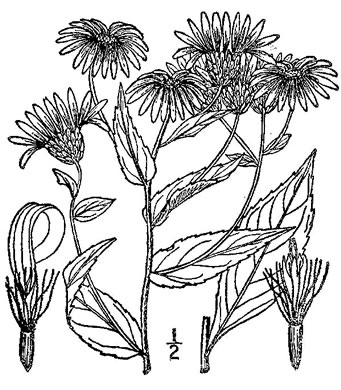Spermatophytes (seed plants): Angiosperms (flowering plants): Eudicots: Core Eudicots: Asterids: Campanulids: Asterales
WEAKLEY'S FLORA OF THE SOUTHEASTERN US (2/10/25):
Eurybia radula
FAMILY
Asteraceae
Go to FSUS key
SYNONYMOUS WITH
PLANTS NATIONAL DATABASE:
Eurybia radula
FAMILY
Asteraceae
SYNONYMOUS WITH Floristic Synthesis of North America. BONAP (Kartesz, 2021)
Eurybia radula
SYNONYMOUS WITH Flora of North America north of Mexico, vol. 19-20-21 (2006)
Eurybia radula
SYNONYMOUS WITH Britton & Brown Illus Flora of Northeast US & adjacent Canada (Gleason, 1952)
Aster radula
COMMON NAME:
Rough-leaved Aster, Low Rough Aster
To see larger pictures, click or hover over the thumbnails.
WEAKLEY'S FLORA OF THE SOUTHEASTERN US (2/10/25):
Eurybia radula
FAMILY
Asteraceae
SYNONYMOUS WITH
PLANTS NATIONAL DATABASE:
Eurybia radula
FAMILY
Asteraceae
SYNONYMOUS WITH
Floristic Synthesis of North America. BONAP (Kartesz, 2021)
Eurybia radula
SYNONYMOUS WITH
Flora of North America north of Mexico, vol. 19-20-21
Eurybia radula
SYNONYMOUS WITH
Britton & Brown Illus Flora of Northeast US & adjacent Canada (Gleason, 1952)
Aster radula
If a search such as "Carex leptalea var. leptalea" doesn't deliver the results you want, try "Carex leptalea".
Or, to minimize chances of a misspelling, try just "Carex le".
Less is more: If "pencil flower" doesn't deliver the results you want, try "pencil".


